Parking in downtown Raleigh is a source of constant questions, along with some complaints.
While most downtown Raleigh residents and visitors have grown accustomed to paying for public parking, some remain confused about where to find it and how it works. Plus, as the city continues to grow and new businesses move downtown, parking, too, will grow and expand.
With so much going on, we decided it was time to sit down and chat with Parking Administrator Gordon Dash. Dash is the guy who oversees it all. His job focuses on long-range planning, and he is the guy who implemented the city’s Parklink paid parking program in 2010.
Skip Ahead:
The State of Parking
Why Pay for Parking
Parking Staff
The Balance of Parking
Parking for People with Disabilities
Glenwood Avenue
Parking Technology
The Parking Budget Shortfall
Other Parking Improvements
Fayetteville Zone Increase
Changes to Parking Decks
The State of Parking
Many people say there is “not enough” parking downtown, but according to a 2008 study, there are more than 40,000 spaces downtown, paid and unpaid. Of those, the city manages 10,013 in the decks, lots and on the street. Since 1999, the city has built four decks to handle the projected demand.
The city began charging for on-street parking in 2010, and not without controversy. Surprisingly, Dash reports mostly kudos from the public on how parking is now handled.
Decks and lots: 8,788
On-street: 1,225
Total: 10,013
Before the city charged for on-street parking, enforcement of time zones was handled by an outside company. That often led to problems, Dash said.
Dash said having an in-house parking program has been a vast improvement over the old system. In-house agents have more flexibility, he said, to handle and report situations. And they are more consistent in their work.
“Customer service is very pleasant,” he said. “Response time to problem areas, and complaints about illegal parking going on in residential areas is far better than it’s ever been, which occurs when you have your own program in house than if you’re dealing with a contractor.”
Why Pay for Parking
Before the city required people to pay for on-street parking, there wasn’t much turnover. Finding a spot downtown, especially a spot in a two-hour zone, was nearly impossible. That is one of the most common compliments Dash now hears, he said.
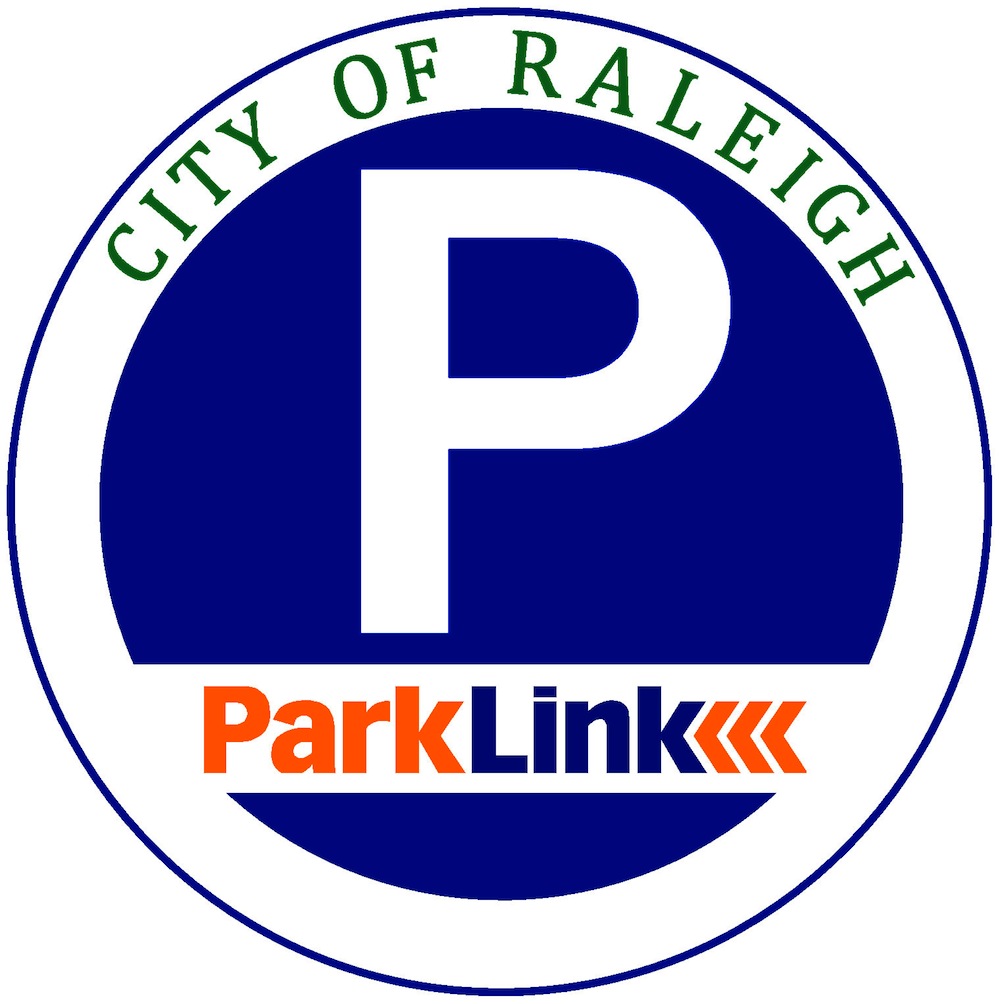
“Probably the most common one I get is ‘We’ve finally got turnover. Now I can actually come downtown, have a business luncheon, or meet a friend for lunch and I can actually find a space on the street without having to drive around, even on Fayetteville Street.’”
People often like to point out that parking is free at the mall or when shopping outside of downtown.
Malls and stores are private locations, Dash said, and the price of parking is certainly part of the price of the items or meal you’re buying. Downtown parking is public space, open to all, and paying emphasizes the fact that it’s a commodity.
“The fact is there’s always a cost for parking. You can’t have something this expensive and just give it away,” he said.
Parking Staff
In case you’re wondering, yes, people sometimes are rude to the parking agents, Dash said.
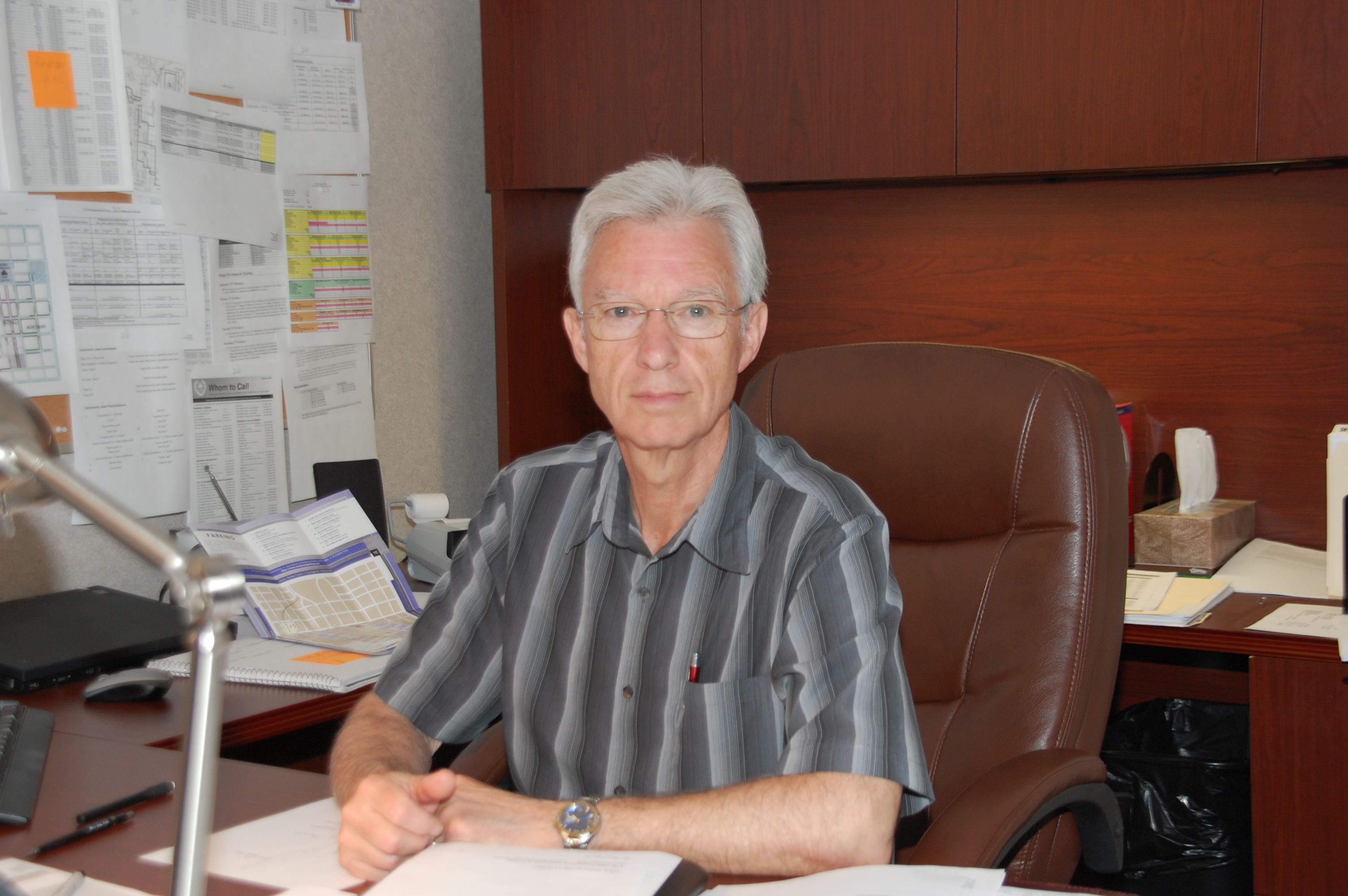 Gordon Dash. Photo by City of Raleigh.
Gordon Dash. Photo by City of Raleigh.
“This is not a glorified job. Nobody wants to put on a parking uniform and write tickets and be faced with insults and, you know, threats all day. We’ve had several agents that have been punched, kicked, pushed, have had their handheld computers knocked out of their hands. All these folks eventually get arrested and get charged and they go to court and they get convicted. But it’s not a job that gives you any glory. And yet they love working here. They love the camaraderie. They can deal with the public. These are people that come from a good client-service background. They understand that insults are at the uniform, not at them. they don’t take it personally for the most part.”
Dash would like to pay the parking agents higher salaries. According to city figures, agents receive $23,000-$25,000 per year. Dash said the pay here is low compared to what other U.S. cities pay their parking agents.
“They’re not getting paid that much, and that’s what hurts them,” he said. “So those that are leaving are leaving because they just can’t make it. I’m fighting to try to get their salaries raised. That’s still a work in progress, but it’s something that’s very important to me because we’ve got really good people here and they’re honest.”
And no, they don’t have any quotas for tickets.
The Balance of Parking
News broke recently of some new apartments going up down Hargett Street, east of Moore Square. It’s a place Emo (East of Moore Square) Raleigh residents recognize as a parking lot for downtown employees who don’t want to pay. But Dash said that doesn’t necessarily mean it’s time to put meters in that area.
“We have to be careful that we don’t go into residential areas with metered parking, because then the residents themselves and their guests, if they park on the street, they have to pay. We don’t really go in as a city and look for places to either meter or to restrict parking unless we get complaints.”
Find the balance between putting a premium on public parking and offering city residents a service is one of Dash’s great challenges.
“Parking is a science. A science is basically 50 percent observation and 50 percent experiment. So you observe, you try something. If it doesn’t work, you try something else. There’s a lot of different principles and technologies we can use to help, but which one works best? I’ve got enough contacts in other cities around the country that have been doing parking a lot longer than Raleigh that I can go to for guidance, but I can’t consider anything that works great in one city as working great here.”
Dash said Raleigh’s blend of native residents and newcomers means creating another balance: that of implementing new technologies versus keeping things status quo.
Parking for People with Disabilities
Dash said metered parking has also improved parking for those with disabilities. Without turnover in the on-street spaces, those with disabilities are forced to park in a deck, meaning they have farther to travel on foot or by wheelchair. The meters have improved that, Dash said, by moving employees out of those on-street spaces, leaving room for visitors.
“All the problems we had on Hargett Street and on Fayetteville Street … I took photographs of the very same cars, day after day after day. They weren’t always in the same space but they were always there, so Wachovia Bank, everything from Wachovia over and all way up Fayetteville Street. Both sides of the street were often handicapped. And so when the meters finally went in, they disappeared almost the next day. And our agents find a lot of those cars up here [Dash pointed to the Jones Street block]. So they were state employees. It was amazing.”
Recently the Record heard complaints about parking around the North Carolina Legislative building, where there are no meters. Finding a parking spot there is not easy when the General Assembly is in session.
Many of the cars have handicapped placards on the dashboard. By our recent count, seven of 11 cars on East Lane Street displayed placards. On East North Street, nine of 11 cars displayed them. Dash said he has heard stories about people abusing handicapped placards, but those streets are governed by the state, meaning it’s not the city’s jurisdiction to enforce parking there.
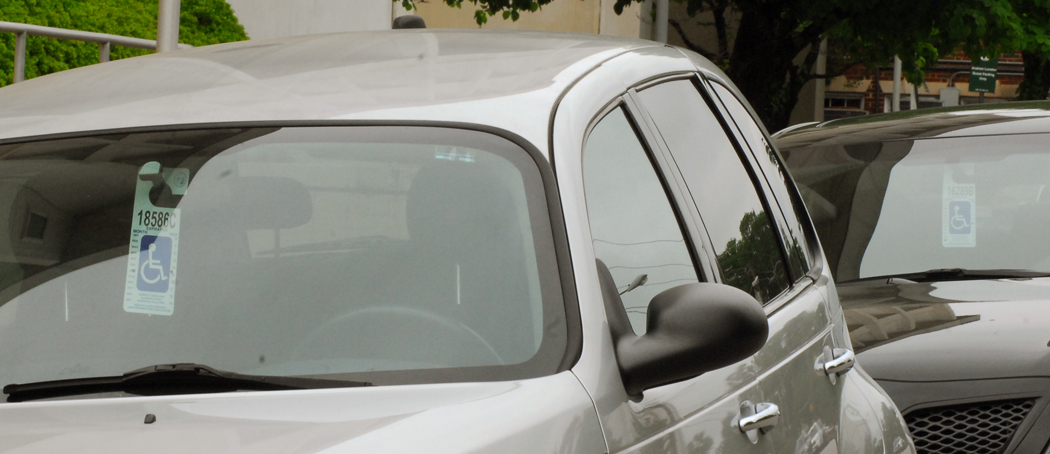 Cars parked near the General Assembly. Photo by Karen Tam.
Cars parked near the General Assembly. Photo by Karen Tam.
However, the state is working with Dash to improve parking on some state-run streets. Officials previously asked Dash to install meters along Jones Street in front of the new section of the Museum of Natural Sciences. Without meters, employees parked there all day, meaning there was no turnover for museum visitors. Installing the meters prompted immediate change, Dash said.
“They’re seeing turnover like they haven’t seen in the last couple of years,” he said.
Now, state parking officials are asking him to install more meters on Jones Street, this time in the 200 block, between Dawson and McDowell streets.
Glenwood Avenue
One surprise after the meters were installed was the change on Glenwood Avenue, Dash said. The street used to be full of cars all day long, and people requested metered parking there to create turnover.
“But that was before they really got an understanding of what exactly the makeup was of the vehicles that park there. And until you actually determine that, again, it’s an experiment, right? Well it didn’t create turnover; it scared them all away. Because the ones that were parking out there were, guess what, employees. And a lot of those employees were folks who work downtown. And they were willing to park that far out and guess what, a lot of them had bicycles in the trunks. They’d cycle in to work. So that was all part of the mix of people that were out there.”
Now, Dash said, parking on Glenwood is easy during the day (with a slight exception on the 200 block in front of condos). Parking begins to fill up at 4:30, he said, when restaurant and bar employees arrive for work.
“So the patrons come in and where do they go? Well they go wherever else. And that’s why Glenwood is such as a zoo at night,” he said. “I’d never force this on them … but if [the merchants] ever complained that they wanted to see turnover, I would say ‘well you can ask to, by petition, you can ask Council to extend the hours for parking on Glenwood.’ Because you can do that in certain areas without having to do the whole area. And if they did that, absolutely the parking rates would change the way that people look at parking on the street, obviously.”
Parking Technology
People seem to like the pay stations, Dash said. He often hears people compliment the ease of use and the fact that they’re not ugly on the sidewalk.
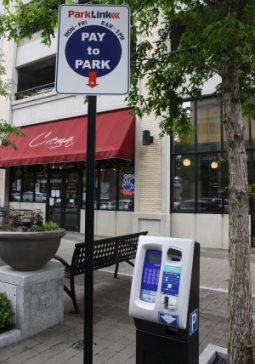
“The thing they like about these ones is that, just like the old-fashioned meters, they still tell you how much time is left on a space. Most pay stations built today don’t. The minute you enter a space number, it cancels out whatever remaining time was there so you never know. But this particular company, which was the company that built the first old-fashioned single-space parking meters, back in the early 1900s, believes in that old-fashioned mentality that the next person coming in has the right to pick up whatever time was purchased before. And I think it’s a good philosophy.”
Parking technology is one area that could be improved, Dash said, but it’s not as simple as find, purchase, install and done. For example, some cities allow residents to pay parking meters through their cell phones.
In Raleigh, not every user seems interested in technology, Dash said. Most people don’t even use credit cards. It breaks down to about 30 percent paying with plastic and 70 percent paying with coins.
The Parking Budget Shortfall
The economy has not been kind to parking decks downtown, leaving the city’s parking fund short. In 2011, city officials faced a $1.4 million parking shortfall. Prior to that, the city lost 489 monthly deck-parking accounts, each worth $100 per month. At one point, officials considered offering ad space in parking decks, but that idea was voted down.
Parking is considered an enterprise fund in the city budget, meaning it should support itself without help from the general fund.
Dash said things are slowly improving. He was concerned, at first, about the departure of Progress Energy — a loss of about 1,200 monthly accounts. But Red Hat has, so far, purchased 890 accounts, he said, and more are expected.
“They are eventually going to at least bring up what we lost from Progress Energy, but the spinoff effect is now there are other companies, smaller, but are partners with Red Hat in one form or another and they are coming from other areas to also move downtown.”
Dash pointed to the renovations in the 227 Fayetteville Street building and to other downtown development in the works, such as a new Marriott Residence hotel near the Performing Arts Center.
“We’re still playing catch-up with our revenue. We’re just out of the red now, coming out of the red, which is great.”
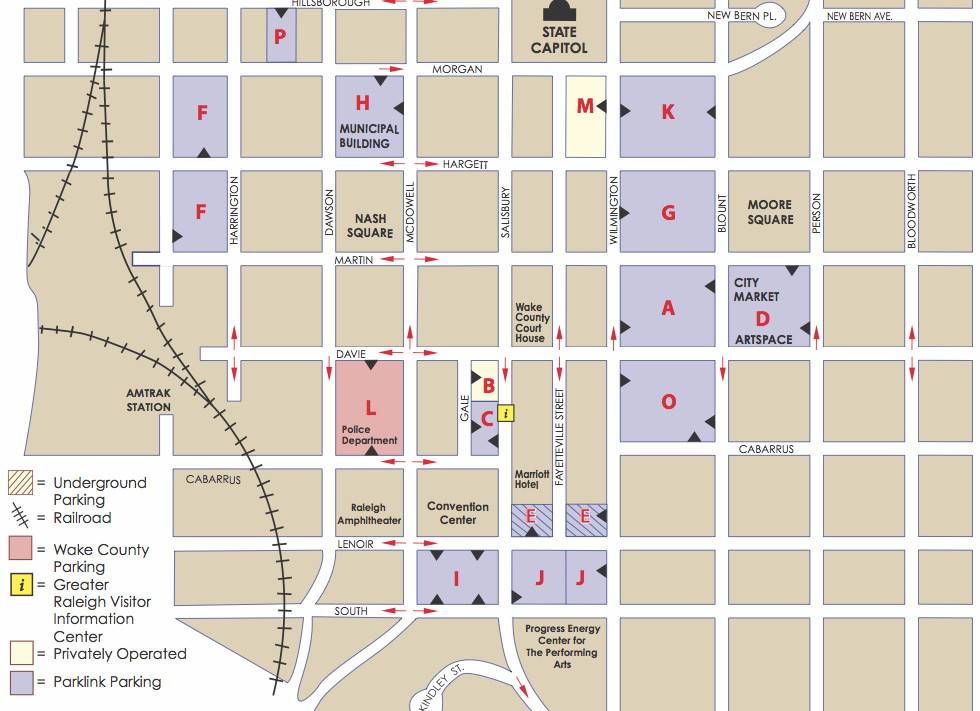
Parking decks are not cheap. The average parking deck above ground is anywhere from $17,000 to $22,000 per space. The city’s underground deck cost $49,000 per space. Right now the city carries more than $100 million in debt for the parking decks.
After the first five years of operation, decks begin to show signs of the stress of weights of vehicles moving around all the time. Dash said 5 percent of the construction cost of a deck is the amount that should be set aside for repairs.
“Things start to get loose. And once concrete develops a few little cracks and moisture gets in, rust develops, and then concrete becomes bad and starts to break loose. And then that’s when you get into serious issues,” he said. “It’s not uncommon for a deck to have to undergo $800,000 to a million dollars of repairs within the first 10 years of operation just to keep it going. Decks should normally last 75 years with proper maintenance, but that maintenance is huge.”
Other Parking Improvements
Many residents who don’t visit downtown often complain that there is nowhere to park, or they can’t find parking. In some cases, they may not be aware of parking decks versus street parking.
A group of downtown Raleigh residents has been meeting with Dash to find out of there are ways to make it easier for people to find the parking decks.
Dash said the group has proposed a few wayfinding measures, such as a mobile app. Parking apps can tell users which decks have spaces available.
Other possible solutions include sensors in the ground to direct traffic, or lights over each parking deck space, displaying either red or green to demonstrate whether the space is available.
Dash said while he loves the ideas, it’s going to cost a lot. Many such programs are free at first, he said, but the operations cost and later replacement costs are expensive.
“Big cities with big infrastructures are finding it very helpful. Raleigh’s not quite there yet.”
Dash said better signage has also been suggested. The city installed wayfinding signs in 2009, which helped, he said, but different signage is still needed to better highlight the decks. The problem is, signage gets political.
“The thing is, ideas like that are not easy to implement because you’ve got various departments, that, once you’re stepping into their turf, you have to go by what their rules are, and the city has ordinance rules and inspections has rules that covers signage size, brightness. You know it’s all considered part of the advertising. The closest that we could get to were what we call the lollipop signs. That’s what you see on the street now where you’ve got the parklink logo with the big ‘P’ in front of the entrances to the decks. But they are not that visible at night even though they’re lighted, they’re not that visible, so it is a problem. But that was all we could get.”
Fayetteville Zone Increase
Dash said he hopes this year to increase the meter rates in the Fayetteville Zone. Frequent downtown visitors will recognize Fayetteville Street as a popular parking location, possibly because of its two-hour time slots.
Dash said by increasing the rate from $1.00 per hour to $1.25, just in that zone, some people will consider parking one block over.
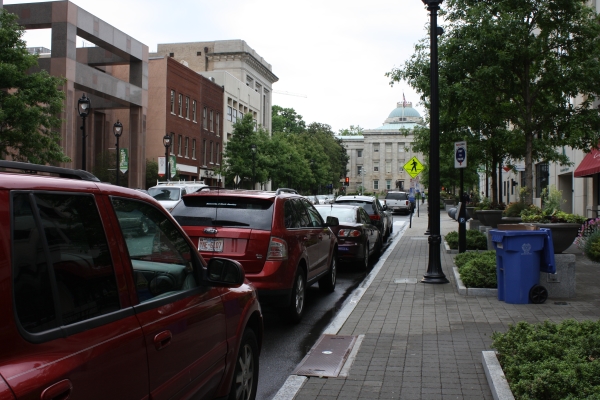 Fayetteville Street is a popular place to park.
Fayetteville Street is a popular place to park.
“Because if the cost goes up it will cause more people to consider whether they want to spend that to park closer to where they want to go and walk less, or pay less and walk a little farther. We find that in a two-hour zone, the average length of time that people stay is about an hour and five minutes. So if that’s the case, people that are only going to be at their destination for as short period of time might well consider parking a little farther out, an extra block or two out and take that extra time to walk back to their car or walk back to their car.
“This is not about revenue for the sake of revenue.”
Changes to Parking Decks
Another big change coming to a parking deck near you — more available parking on the lower levels. City employees have always used the premium spaces, Dash said, because in theory that means they spend less time walking to and from vehicles.
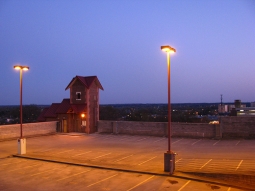 The top of one of the downtown parking decks. Photo by Alex Ford.
The top of one of the downtown parking decks. Photo by Alex Ford.
Those who pay by the hour or day pay the most for parking ($12 per day), compared to the rates paid by those who obtain monthly permits (about $4 per day if you park five days per week). Dash said it makes more sense to give the best spots to those who pay the most.
“Reserve parking should actually be in the higher levels and vehicles with free parking should be on the roof because it’s the least desirable for the public to want to go to. Why is it that right now we still have folks who can’t find parking until they’re up on the roof? There’s something wrong.”
Starting in January of 2014, city vehicles parking in the Moore Square deck and Wilmington Station deck will park on the roof. Dash said the Wilmington Station deck is consistently busy, both with monthly accounts during the day and with visitors to Marbles Museum and iMax theater at night and on weekends.
“And for the moms and the families that are coming in with kids to go to Marbles or IMAX, they need that low parking. They don’t want to be on the roof and taking an elevator down all the time,” he said.
The rest of the decks will follow.
